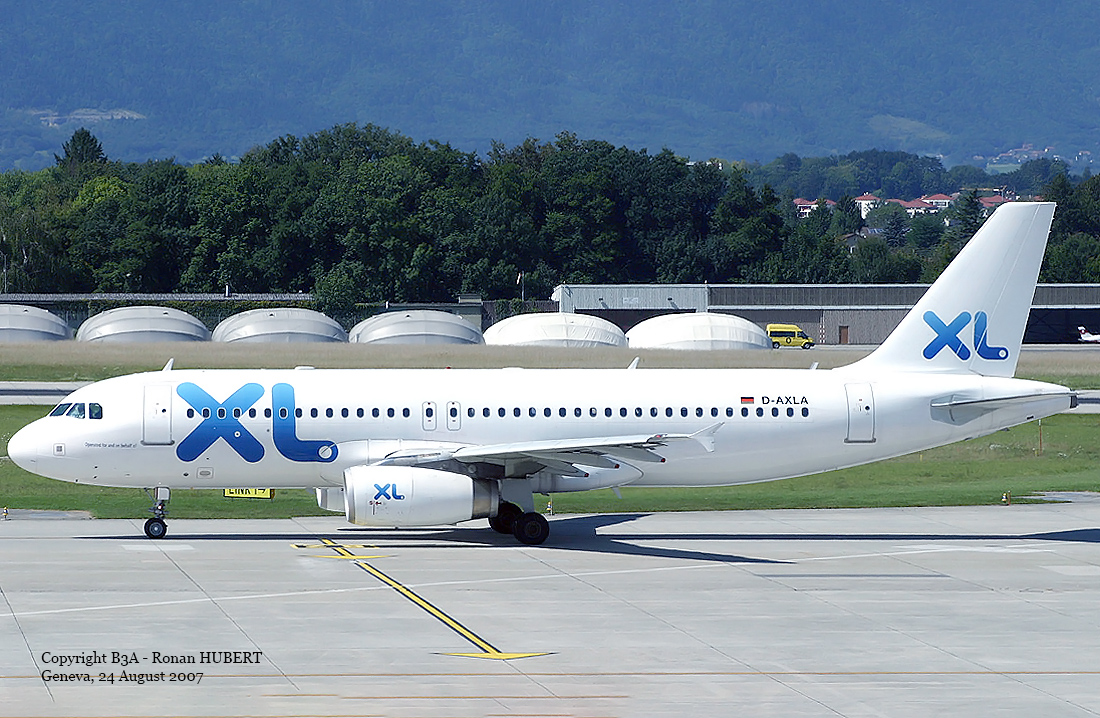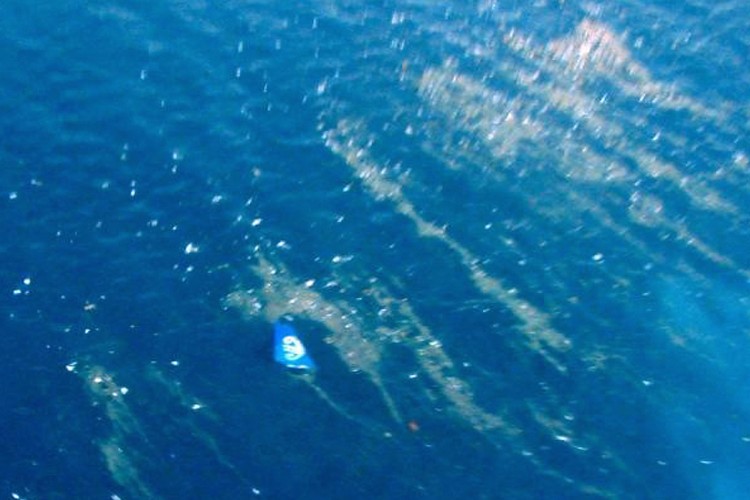Zone
Crash of an Airbus A320-232 off Saint-Cyprien: 7 killed
Date & Time:
Nov 27, 2008 at 1646 LT
Registration:
D-AXLA
Survivors:
No
Schedule:
Perpignan - Frankfurt
MSN:
2500
YOM:
2005
Flight number:
GXL888T
Crew on board:
2
Crew fatalities:
Pax on board:
5
Pax fatalities:
Other fatalities:
Total fatalities:
7
Captain / Total hours on type:
7038.00
Copilot / Total hours on type:
5529
Aircraft flight hours:
10124
Aircraft flight cycles:
3931
Circumstances:
Flight GXL888T from Perpignan-Rivesaltes aerodrome was undertaken in the context of the end of a leasing agreement, before the return of D-AXLA to its owner. The program of planned checks could not be performed in general air traffic, so the flight was shortened. In level flight at FL320, angle of attack sensors 1 and 2 stopped moving and their positions did not change until the end of the flight. After about an hour of flight, the airplane returned to the departure aerodrome airspace and the crew was cleared to carry out an ILS procedure to runway 33, followed by a go around and a departure towards Frankfurt/Main (Germany). Shortly before overflying the initial approach fix, the crew carried out the check on the angle of attack protections in normal law. They lost control of the airplane, which crashed into the sea.
Probable cause:
The accident was caused by the loss of control of the airplane by the crew following the improvised demonstration of the functioning of the angle of attack protections, while the blockage of the angle of attack sensors made it impossible for these protections to trigger. The crew was not aware of the blockage of the angle of attack sensors. They did not take into account the speeds mentioned in the program of checks available to them and consequently did not stop the demonstration before the stall.
The following factors contributed to the accident:
• The decision to carry out the demonstration at a low height
• The crew’s management, during the thrust increase, of the strong increase in the longitudinal pitch, the crew not having identified the pitch-up stop position of the horizontal stabilizer nor acted on the trim wheel to correct it, nor reduced engine thrust
• The crew having to manage the conduct of the flight, follow the program of in-flight checks, adapted during the flight, and the preparation of the following stage, which greatly increased the workload and led the crew to improvise according to the constraints encountered
• The decision to use a flight program developed for crews trained for test flights, which led the crew to undertake checks without knowing their aim
• The absence of a regulatory framework in relation to non-revenue flights in the areas of air traffic management, of operations and of operational aspects
• The absence of consistency in the rinsing task in the airplane cleaning procedure, and in particular the absence of protection of the AOA sensors, during rinsing with water of the airplane three days before the flight. This led to the blockage of the AOA sensors through freezing of the water that was able to penetrate inside the sensor bodies.
The following factors also probably contributed to the accident:
• Inadequate coordination between an atypical team composed of three airline pilots in the cockpit
• The fatigue that may have reduced the crew’s awareness of the various items of information relating to the state of the systems.
The following factors contributed to the accident:
• The decision to carry out the demonstration at a low height
• The crew’s management, during the thrust increase, of the strong increase in the longitudinal pitch, the crew not having identified the pitch-up stop position of the horizontal stabilizer nor acted on the trim wheel to correct it, nor reduced engine thrust
• The crew having to manage the conduct of the flight, follow the program of in-flight checks, adapted during the flight, and the preparation of the following stage, which greatly increased the workload and led the crew to improvise according to the constraints encountered
• The decision to use a flight program developed for crews trained for test flights, which led the crew to undertake checks without knowing their aim
• The absence of a regulatory framework in relation to non-revenue flights in the areas of air traffic management, of operations and of operational aspects
• The absence of consistency in the rinsing task in the airplane cleaning procedure, and in particular the absence of protection of the AOA sensors, during rinsing with water of the airplane three days before the flight. This led to the blockage of the AOA sensors through freezing of the water that was able to penetrate inside the sensor bodies.
The following factors also probably contributed to the accident:
• Inadequate coordination between an atypical team composed of three airline pilots in the cockpit
• The fatigue that may have reduced the crew’s awareness of the various items of information relating to the state of the systems.
Final Report:


Crash of a Douglas DC-6B near Fitou: 5 killed
Date & Time:
Apr 22, 1985
Registration:
F-ZBAE
Survivors:
No
Schedule:
Marseille - Perpignan
MSN:
43834
YOM:
1953
Flight number:
Pélican 63
Crew on board:
3
Crew fatalities:
Pax on board:
2
Pax fatalities:
Other fatalities:
Total fatalities:
5
Circumstances:
The four engine aircraft departed Marseille-Marignane on a special flight to Perpignan-Rivesaltes Airport, carrying two passengers and a crew of three under callsign Pélican 63. While descending to Perpignan Airport, the crew encountered poor weather conditions with fog and rain showers. In limited visibility, the crew failed to realize his altitude was too low when the aircraft struck the slope of a mountain located near Fitou, about 20 km north of Perpignan Airport. The aircraft was destroyed upon impact and all five occupants were killed. The passengers were one engineer and one Colonel from the French Army while the captain, aged 64, was the deputy of the Chief of Operations of the Marseille-Marignane Airbase. They were flying to Perpignan-Rivesaltes Airport to proceed to a technical visit of the supply center.

Crash of a Douglas C-47A-35-DK in the Mediterranean Sea: 2 killed
Date & Time:
Oct 3, 1980
Registration:
ECT-025
Survivors:
No
Schedule:
Madrid - Perpignan - Frankfurt
MSN:
13375
YOM:
1944
Crew on board:
2
Crew fatalities:
Pax on board:
0
Pax fatalities:
Other fatalities:
Total fatalities:
2
Circumstances:
The DC-3 aircraft had been decommissioned by Spanish Air Force and stored at Madrid-Cuatro Vientos Airport. It was auctioned in July 1979 and bought by Kurfiss Aviation of Germany to become part of an aviation museum. The aircraft was then repaired by mechanics contracted by the new owner. A provisional, restricted Certificate of Airworthiness was issued to allow the airplane to be ferried to Frankfurt via Perpignan Airport (PGF). On the day of the ferry flight a VHF radio was installed but two-way communication could not be established. The departure was delayed until finally took off at 15:29 hours, without authorization, using a runway which was not rated for the weight of the DC-3 aircraft. There was no communication with the flight due to the radio problems. The aircraft presumably reached the zone of Barcelona in very low visibility conditions, due to both the hazy conditions and the diminishing daylight hours. The airplane did not arrive at Perpignan. A search operation was started but no sign of the plane was found. It is presumed to have crashed in the Mediterranean Sea.
Probable cause:
Due to lack of evidences as the wreckage was not found, the exact cause of the accident could not be determined.

